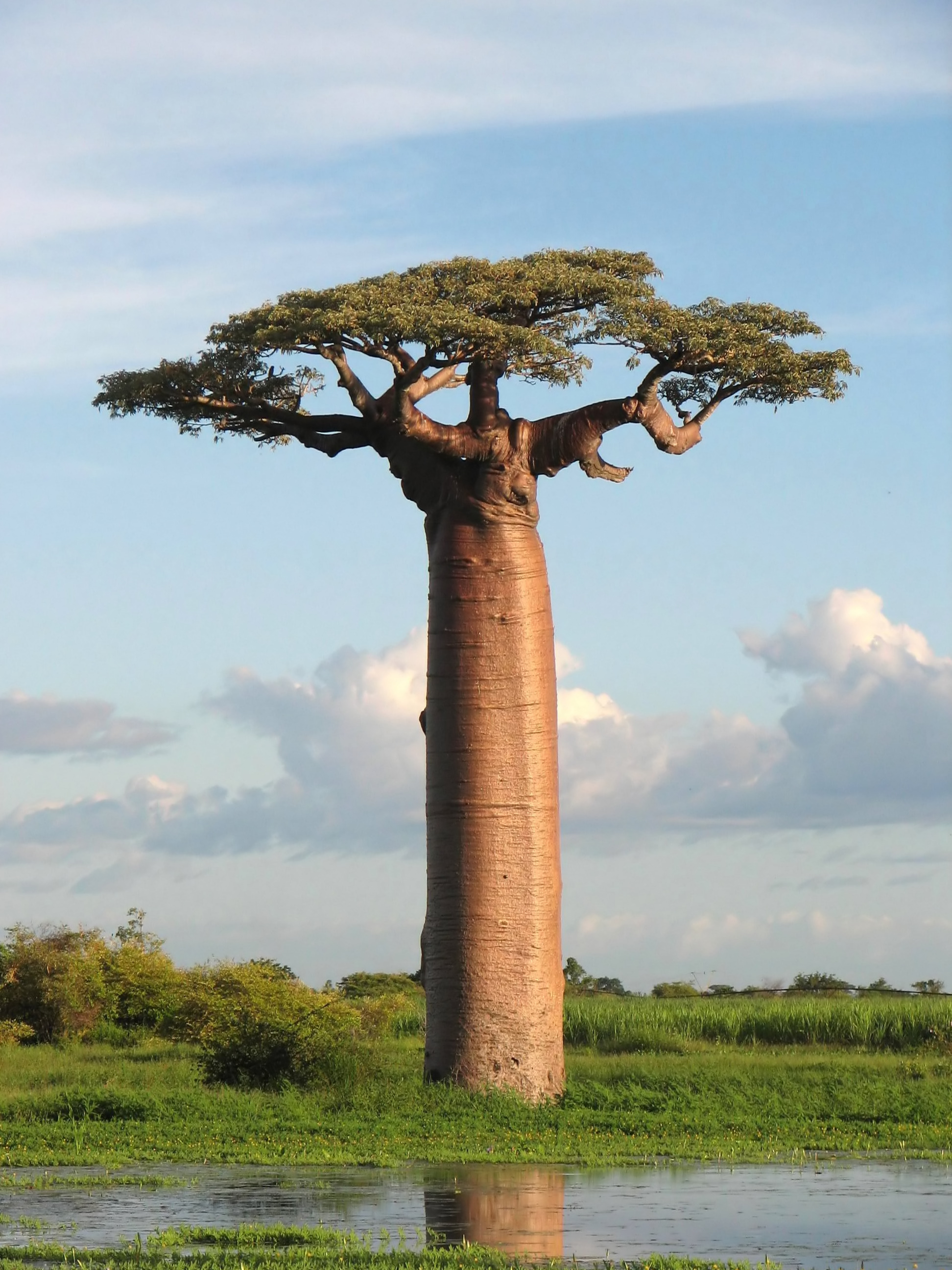African baobab tree: how one plant creates an entire habitat
One Earth’s “Species of the Week” series highlights the flagship species of each of the 844 unique ecoregions contained within Earth’s bioregions.
The magnificent baobab tree (Adansonia digitata) is an icon of the African continent. With bark and fruit offering over 300 life-sustaining uses, it is the root of many Indigenous remedies, traditions, and folklore. Hence its literal nickname, ‘The Tree of Life.’
.jpg)
Baobab trees along Baobab Alley at sunset near Morondava, Madagascar. Photo ID 129751562 © Rinus Baak | Dreamstime.com
Giants of the ages
Predating humankind, this prehistoric species is over 200 million years ago. European explorers claimed the trees could live for up to 5,000 years, but carbon dating indicates they may live up to 3,000 years.
Known to reach up to 100 feet tall with a circumference to match, these trees are enormous, providing shelter, food, and water for various life forms. Indigenous African savanna peoples have long centered their communities around these monumental trees.
Essential for the ecosystem
Baobab trees are fundamental to the entire dry African savanna ecosystem. They help keep soil conditions humid, aid nutrient recycling, and slow soil erosion with their massive root systems.

In an arid climate, baobabs symbolize life in a landscape where little else can thrive. Its large whitish flowers open at night and fall within 24 hours, creating a beautiful display at both ends of the cycle.
As a succulent, the tree absorbs and stores water from the rainy season in its massive trunk, producing a nutrient-dense fruit in the dry season, which can grow up to a foot long. The fruit contains tartaric acid and Vitamin C, serving as a vital nutrient and food source for many species.
They are also an essential source of water and shelter for hundreds of animals, including birds, lizards, monkeys, and even elephants – which can eat their bark for moisture when there is no water nearby. Bats pollinate the flowers, feeding on their nectar.
.jpg)
Children swim in lake near Baobab Alley in Morondava, Madagascar. Photo ID 185814815 © Ekaterina Tsvetkova | Dreamstime.com
The African baobab is remarkable not only because of its size, lifespan, fruit, and bark but also in the way it continually grows multiple fused stems. The bark regenerates in the space between these stems, called false cavities, which is unique to the baobab.
In human culture
For humans, the baobab’s fruit pulp can be eaten, soaked in water to make a refreshing drink, preserved into a jam, or roasted and ground to make a coffee-like substance. The bark can be pounded to make everything from rope, mats, and baskets to paper and cloth. Leaves are also used, they can be boiled and eaten, or glue can be made from their flower’s pollen.
Throughout the Zambezi, Indigenous communities note the baobab for its branches that seem to span out in all directions like roots. Local legend says the baobabs were too proud, so the gods became angry and uprooted them and threw them back into the ground upside-down.
Withstanding climate change
Indigenous peoples have learned, through centuries, to live harmoniously with these majestic trees, thriving off of their many uses without depleting them. However, due to climate change, nine of thirteen of Africa’s oldest and largest baobab trees have died in the past decade. Scientists speculate that warming temperatures have killed the trees directly or made them weaker and more susceptible to drought, diseases, fire, or wind.
Only with the integration of ecological, social, and economic studies involving local communities can we restore Africa’s climate and ecosystem over the long term and ensure that the baobab tree will continue to live and thrive for thousands of years to come.
Interested in learning more about the bioregions of Afrotropics? Use One Earth's interactive Navigator to explore bioregions around the world.
Explore Earth's Bioregions.jpg?auto=compress%2Cformat&w=1440)

